
10 fungi you’ll find in the Adelaide Hills
The world of fungi is weird and wonderful, with strange names that sound like they belong in fiction, and structures that appear for just a matter of days before shrivelling up and disappearing.
Some look like cauliflower, coral or even teeth. And some are highly poisonous, so don’t eat them unless you are accompanied by an expert – even if it looks edible or is named after something delicious.
We often wander past these fantastic fungi without even noticing, but they’re definitely worth a closer look.
Before we show you which fungi to look out for, let’s take a closer look at what fungi actually are and how dangerous they can be.
What’s all the fuss about fungi?
Fungi are important in all ecosystems, from your backyard to the local park.
Many species of fungi return vital nutrients to the soil by breaking down organic matter, which in some cases is dead animals. A fancy name for this ability is ‘saprotrophic’.
Others help plants grow by supplying them with essential nutrients that they have drawn out of the soil – something they are particularly good at.
Of course, some of them are eaten by animals too.
Don’t make a fatal mistake
Just because they might look interesting, it doesn’t mean fungi are safe to touch or eat.
In fact, it’s largely unknown which native fungi are edible and which are poisonous, so don’t eat any you come across and wash your hands if you accidentally touch one.
While we’re at it, don’t assume you know what a regular edible mushroom looks like either. You’d need an expert to help you tell the difference between the poisonous yellow stainer (Agaricus xanthodermus) and the mushrooms you buy from the supermarket. And some fungi, such as the death cap fungi (Amanita phalloides) can kill you if eaten, so it’s best not to take the risk.
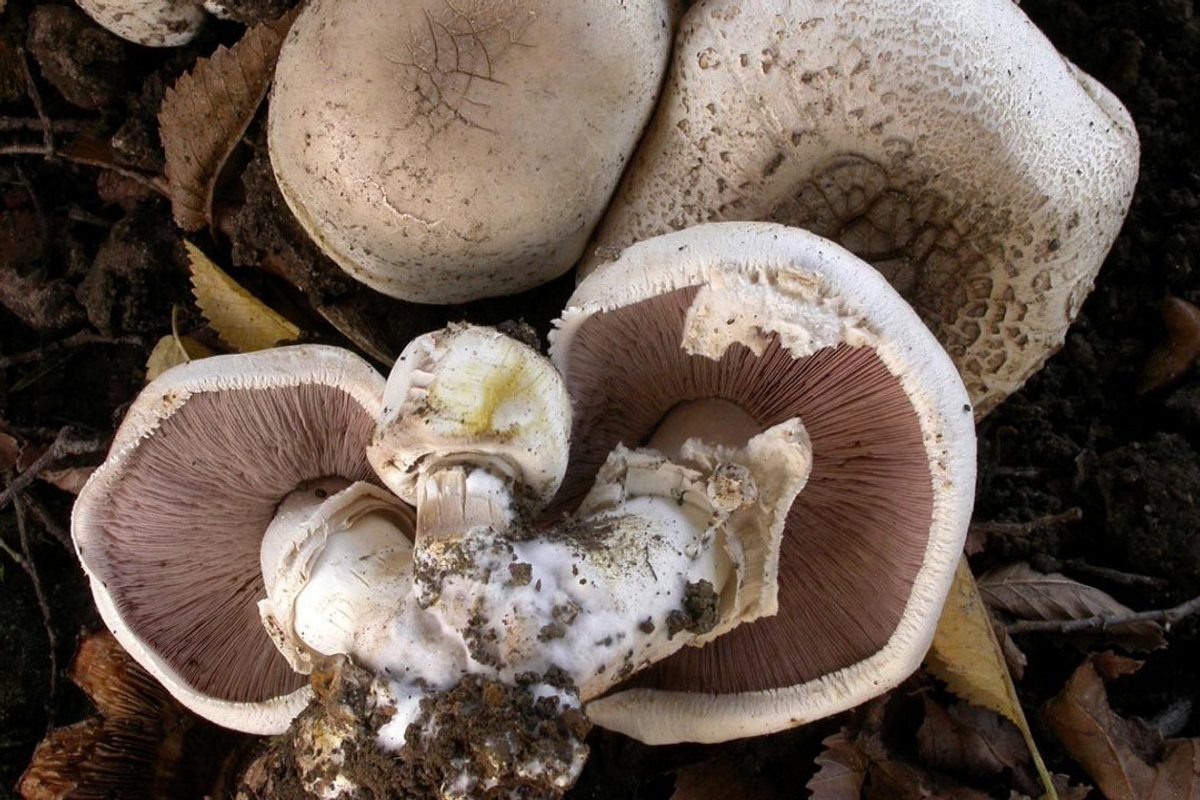
But don’t let this discourage you from looking at and photographing these fascinating organisms.
Here are five that you can find in and around the Adelaide Hills at this time of year:
1. Collared earth star (Geastrum triplex)
This fungus sounds more like it should be a ship in Star Wars than a plant. It starts as an onion shape before the outer layer peels away to resemble a star. Spores puff out through a hole in the centre if it’s touched.

2. Coral fungus (Ramaria australiana)
A coral or cauliflower look-alike – whichever way you’d like to see it. This ‘fun guy’ is part of the family that produces its spores on club-shaped structures called basidia.

3. Jelly baby (Leotia lubrica)
This one sounds tasty, but don’t be fooled into eating it as it’s inedible. It’s a yellow to green colour and has a rounded cap sitting on top of its stem.
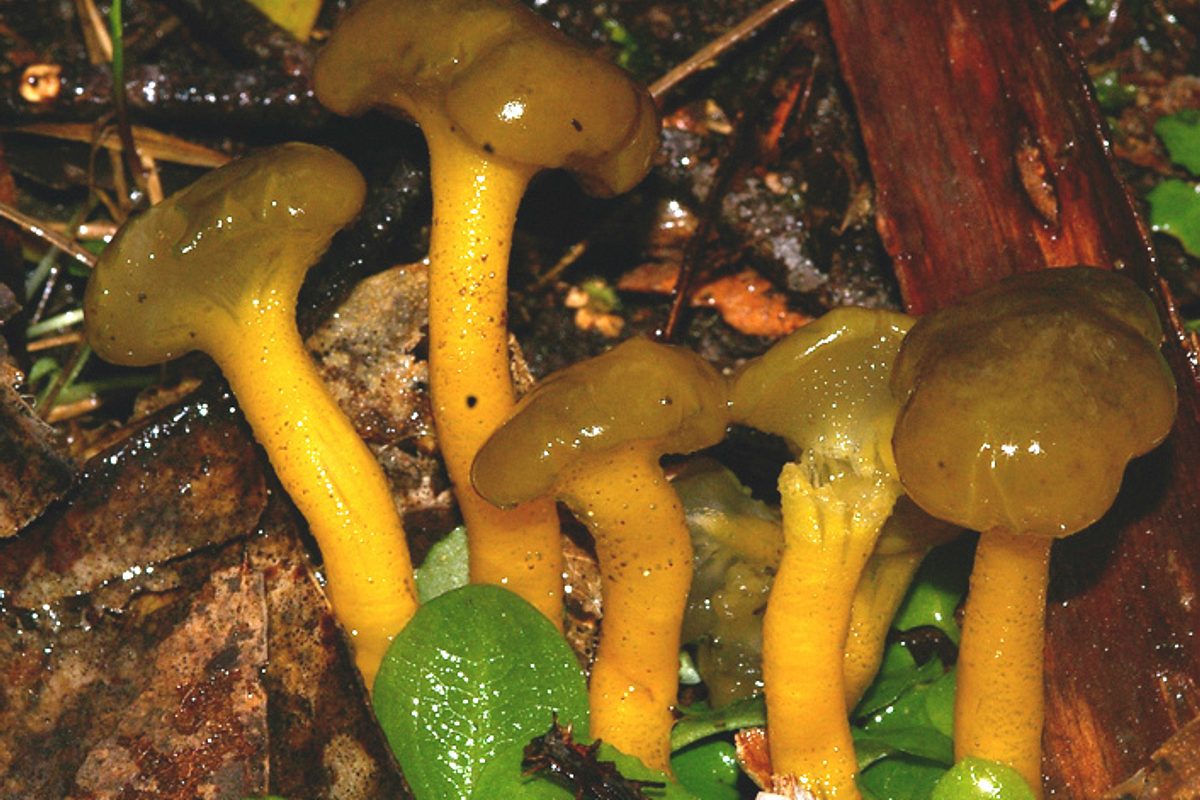
4. Smooth cage (Ileodictyon gracile)
This is a creepy looking fungus that grows in the shape of a cage and can separate from its base and roll along the ground. Smooth cage is one of the ‘stinkhorns’, which as the name suggests, often smells quite unpleasant.
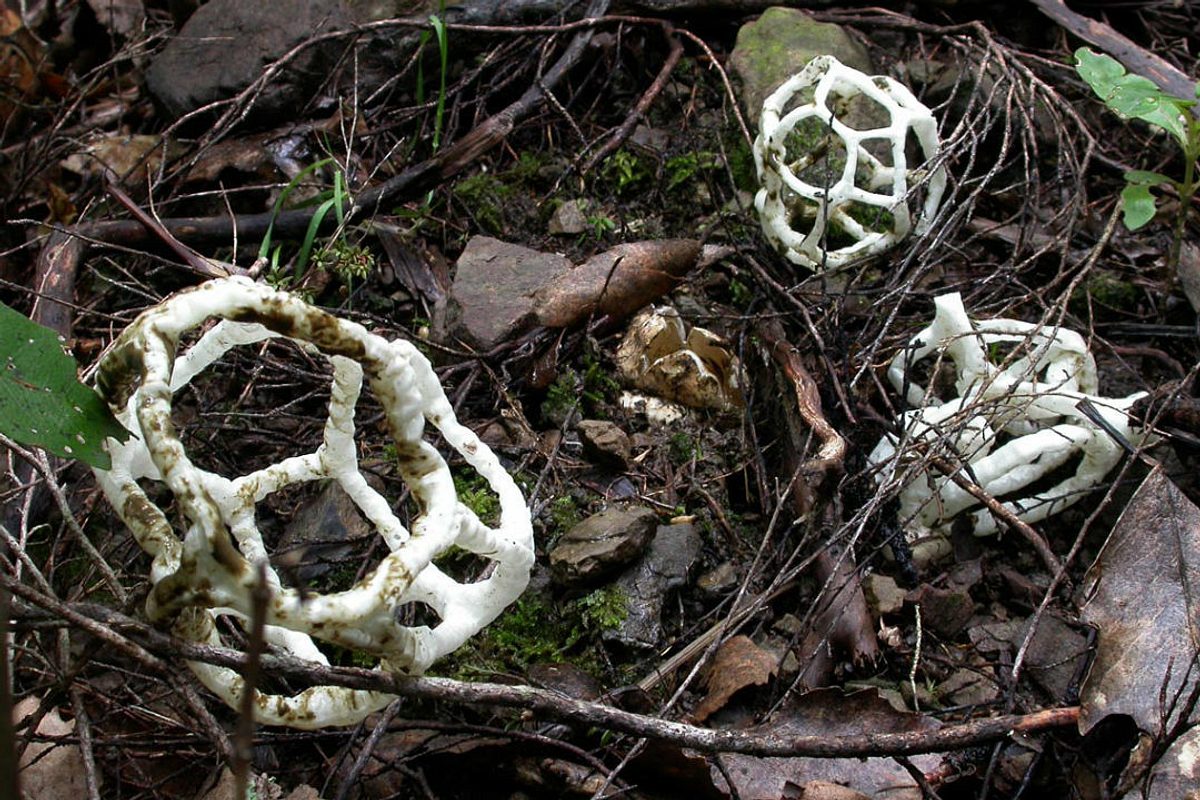
5. Lawyer’s wig (Coprinus comatus)
This fungus pops out of the ground as a white, scaly cylinder but its gills eventually turn into black liquid. Once upon a time, this liquid was used as writing ink – in George Washington’s day apparently.
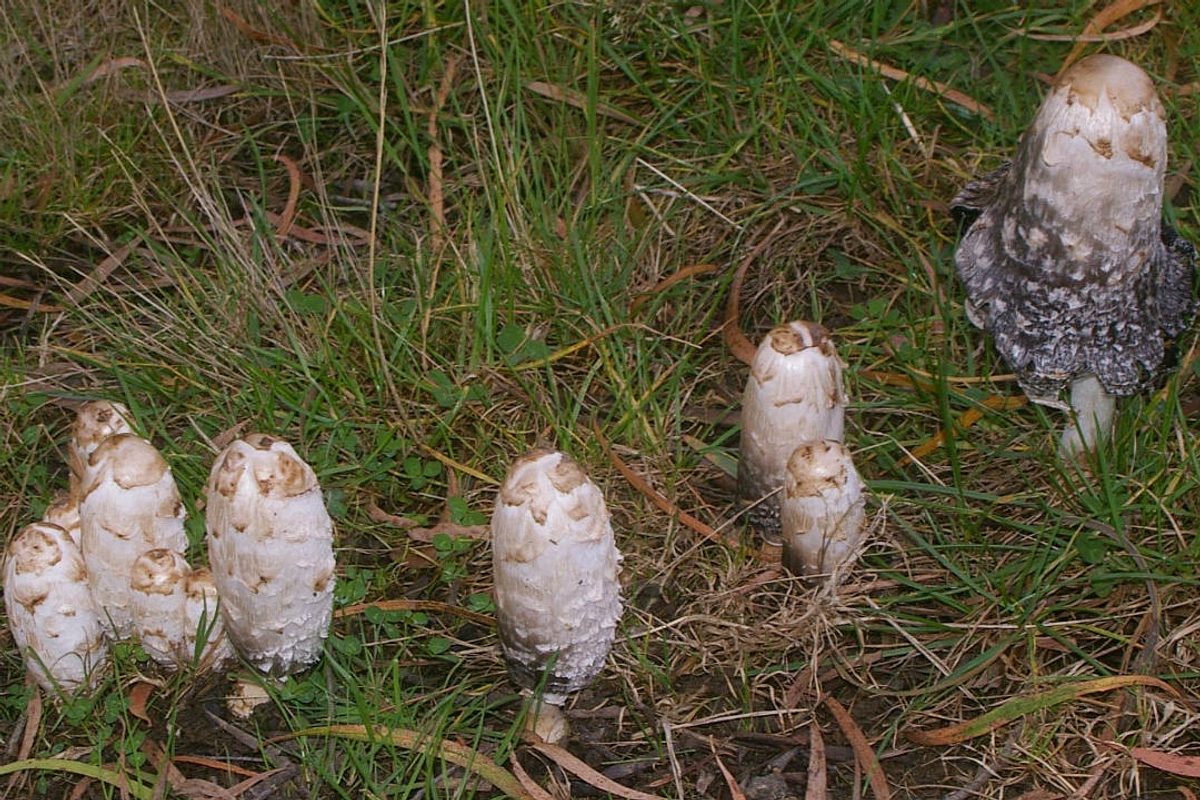
6. Turkey tail (Trametes versicolor)
Turkey tail fungi come in a variety of colours, and are often striped. They are shelf-like structures and can be found growing on wood of all descriptions, sometimes even fence posts.
Some of the brown turkey tail varieties can actually look a bit like wood, so they blend in with their surrounds and can be hard to spot.
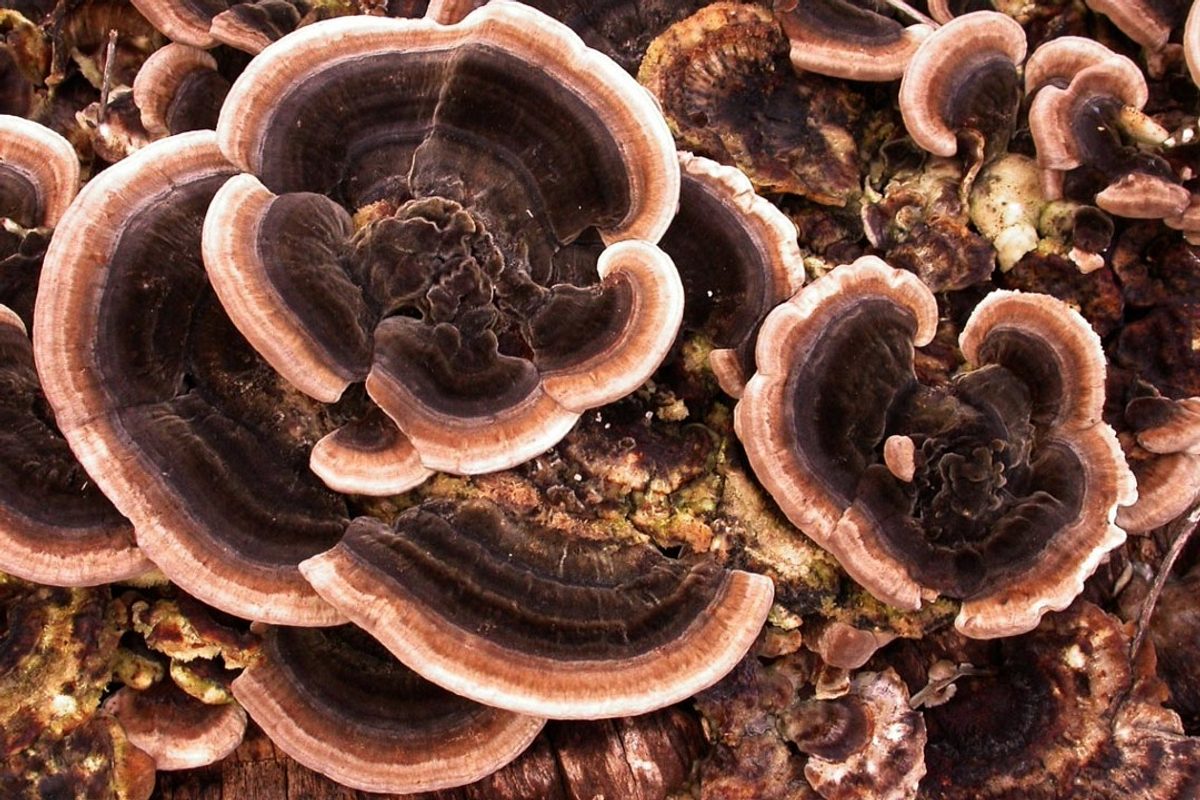
7. Bird’s nest (Cyathus olla)
This intriguing greyish yellow fungus resembles a little nest filled with eggs. These egg-like structures are called peridioles, and are actually packets of microscopicspores.
Raindrops splash the ‘eggs’ out of the nest so the spore packets are spread. The spores germinate andeventually new ‘nests’ may be produced.
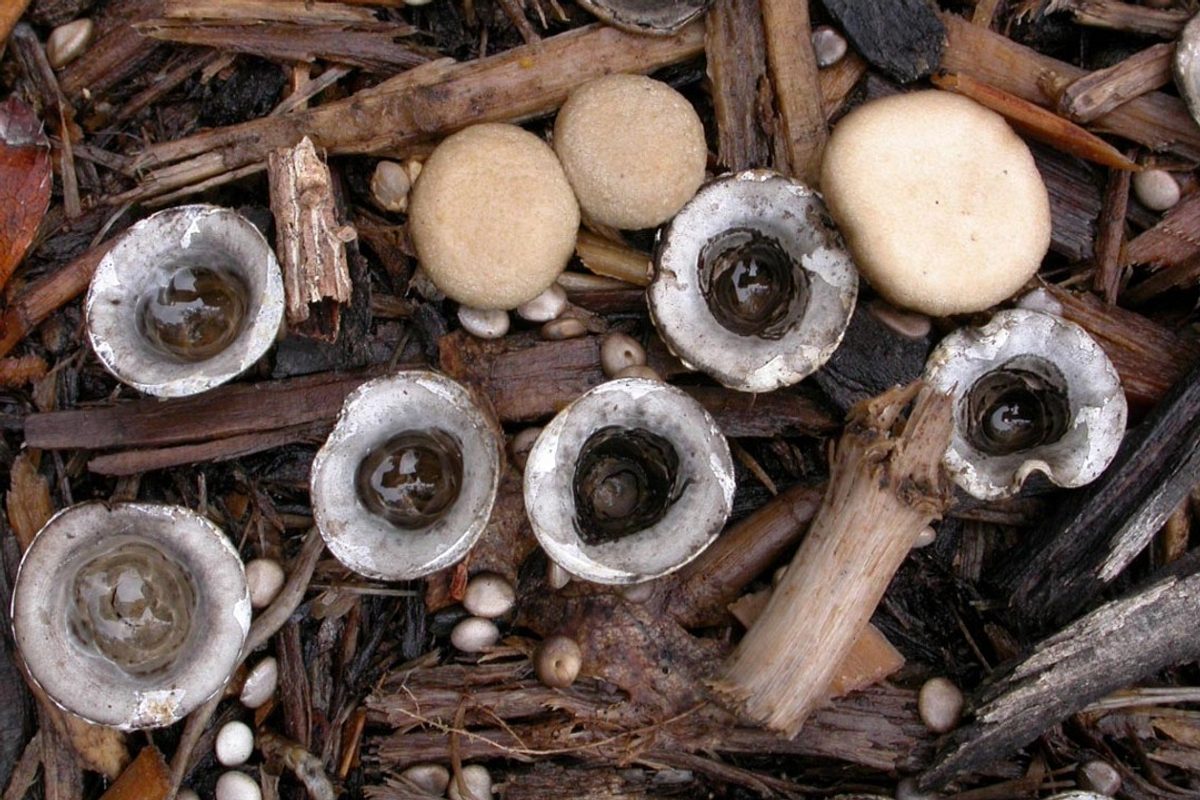
8. Green skinhead (Cortinarius austrovenetus)
Green is a rare colour for fungi. So with its green-coloured top or cap, the green skinhead is somewhat unusual.
It’s known as a gilled fungus, because of the plate-like structures (gills) on the underside of its cap wherethe spores are produced.
Green skinheads are mycorrhizal, which means they have an essential relationship with the plant they grow on. Thefungus collects nutrients and water which are then used by the plant, and the plant provides energy to the fungusin the form of sugars.

9. Ghoul fungus (Hebeloma aminophilum)
Do you think ghoul fungus sounds creepy? Anything that grows on or next to rotting flesh or bones is bound to seem that way.
Not only will ghoul fungus grow on something dead, it can also be found along areas where people have urinated.Charming. In fact, the ‘aminophilum’ part of this species’ name actually meansammonia-loving.
Ghoul fungi often grow in a mass and can reach a height of about 12 centimetres.
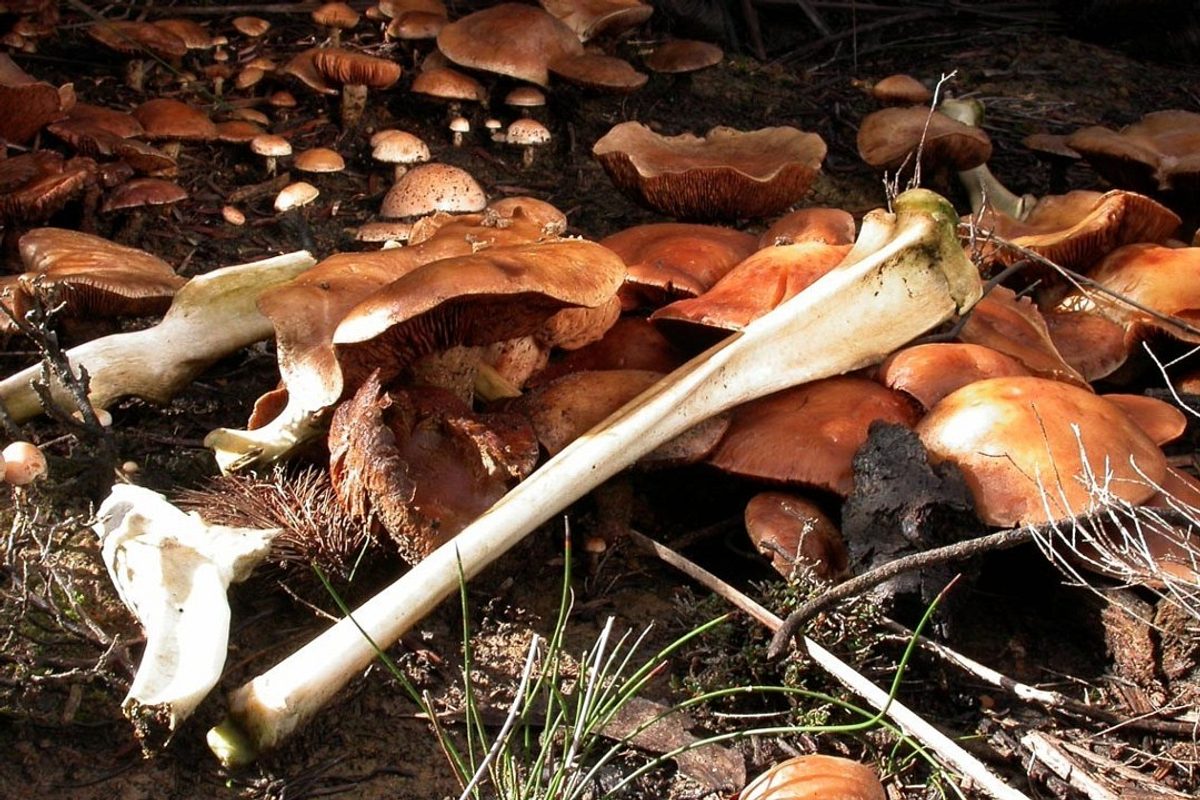
10. Pixie’s parasol (Mycena interrupta)
Pay close attention to tree trunks and logs to see if you can spot this species. It’s uncommon in South Australia, so if you find one, count yourself lucky!
With a blue cap perched on a white-coloured stem, pixie’s parasols look as pretty as they sound. This species is saprotrophic.

Note: It is prohibited to take fungi (including mushrooms) from national parks and gardens for the health and safety of the public.
Learn more about the fungi of the Hills and Fleurieu
This story was originally posted in August 2016.





